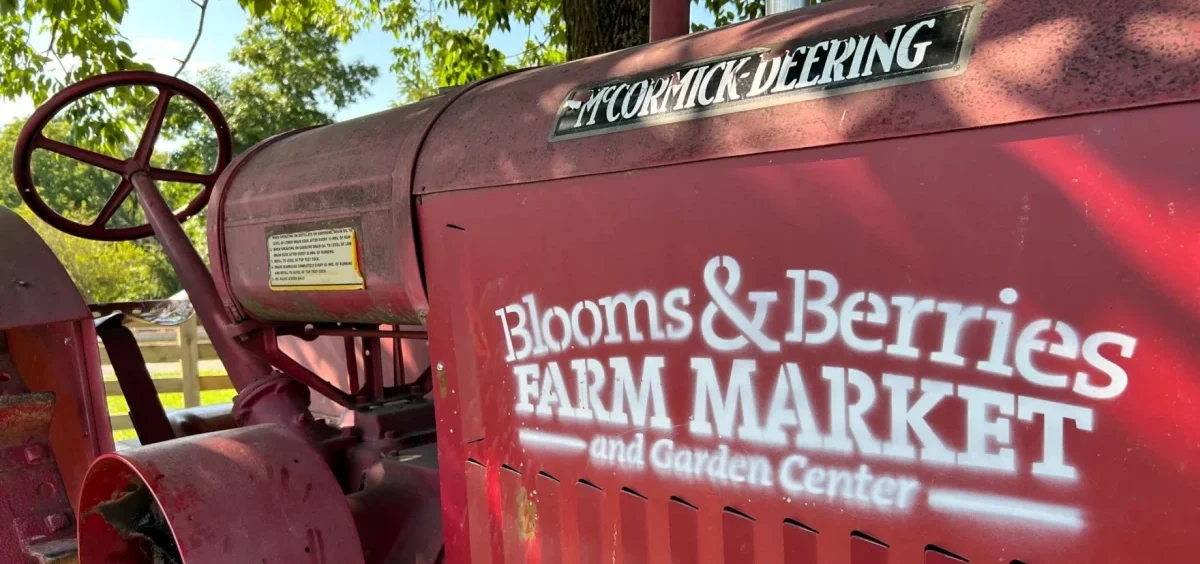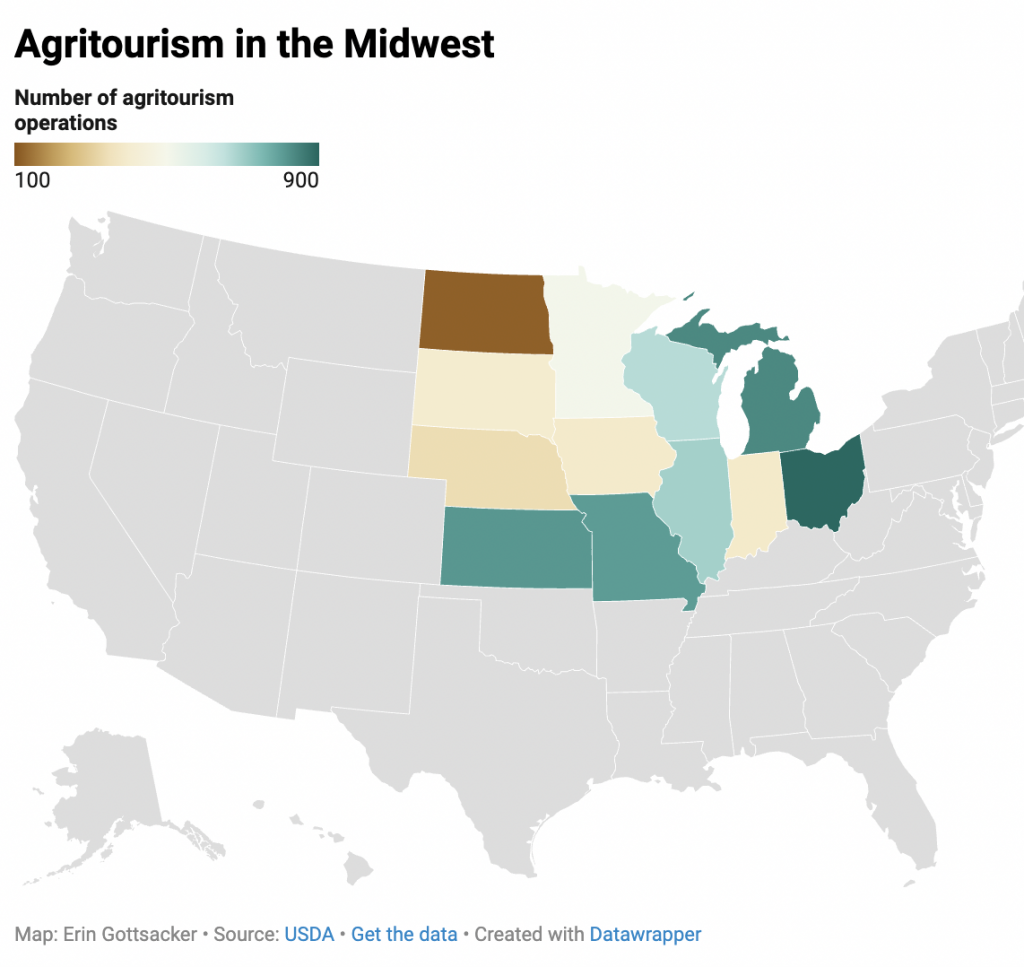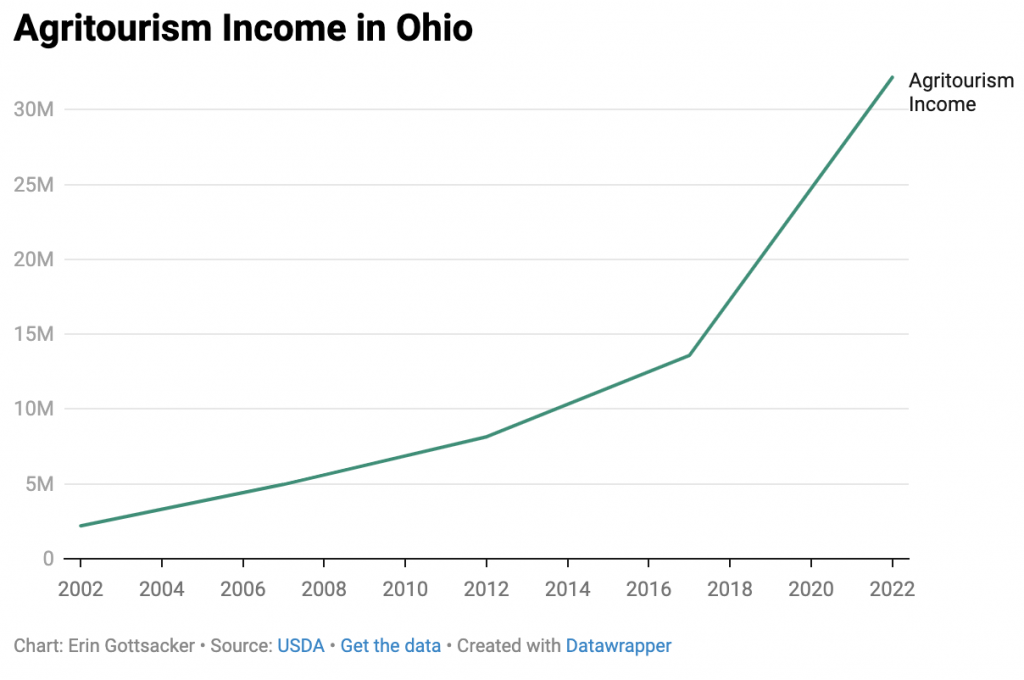News

From you-pick berries to hay rides, agritourism is booming in Ohio
By: Erin Gottsacker | The Ohio Newsroom
Posted on:
WARREN COUNTY, Ohio (The Ohio Newsroom) — Jeff Probst’s family has owned farmland in Warren County, northeast of Cincinnati, for 85 years. Over the generations, they’ve tried all kinds of things to keep it profitable: from row-cropping to raising cattle and hogs.
But about 25 years ago, when Probst and his parents were starting to think about the price tag of a college education, they decided to venture into a new realm: agritourism.
“They decided [to plant] an acre of strawberries,” Probst said. “And mom loved flowers, so they built a little wooden framed greenhouse.”
The original plan was to start a you-pick strawberry operation, coupled with a small garden center. But then, they expanded, hosting festivities in the fall and staffing a roadside produce stand to bridge the gap between berry and pumpkin seasons.
“We failed a lot in the beginning,” Probst said. “We made tremendous mistakes.”
But Probst and his family were at the forefront of an industry about to take off. Between 2002 and 2022, the number of agritourism operations in Ohio nearly tripled.
“Explode wouldn’t even indicate what we’re seeing in growth,” Probst said.
By 2022, the most recent year data from the national Census of Agriculture is available, Ohio had nearly 900 farms pulling income from agritourism activities. That’s more than any other Midwestern state.
What’s driving the agritourism boom?
Farms across the country are facing an inflection point, said Suzi Spahr, the executive director of the North American Farmers’ Direct Marketing Association.
“Now, whether that is due to, they’ve been doing commodity crops or wholesale crops for many years, and the revenue margins are not really cutting it,” she said.
Or maybe a son or daughter wants to work the land too, but the farm doesn’t earn enough revenue to sustain multiple households.
“So they are looking for a diversification model that allows them to find new opportunities,” Spahr said.
Agritourism offers farmers that option, at a time when the cost and availability of land makes expanding often unthinkable.
“As the population increases, it’s harder to buy land,” said Ohio State Extension worker Kate Hornyak. “Much of the increase in agritourism is driven by the suburbanizing state that we’ve become.”
The industry has proven profitable in Ohio. Over the past two decades, income from agritourism operations in the state has jumped more than 1,000% to over $32 million.
The model has allowed family farms like Jeff Probst’s to stay in business. Today, their Blooms & Berries farm market is thriving — complete with you-pick berry patches, you-dig potatoes, a petting zoo, beer garden and on-site bakery.
New faces in agritourism
But these days, the industry is also attracting plenty of newcomers.
Jason Pratt, for example, didn’t grow up farming, but when he retired from the marines and moved back to Fairfield Township, where he grew up north of Cincinnati, he wanted to try something different.
“I was like, ‘Hey, I’m not moving around anymore. Let me get some beehives,’” he said.
Then, once he figured out how to harvest and sell honey, he moved on to blackberries. He planted the crop near his mom’s horse barn about 10 years ago.



